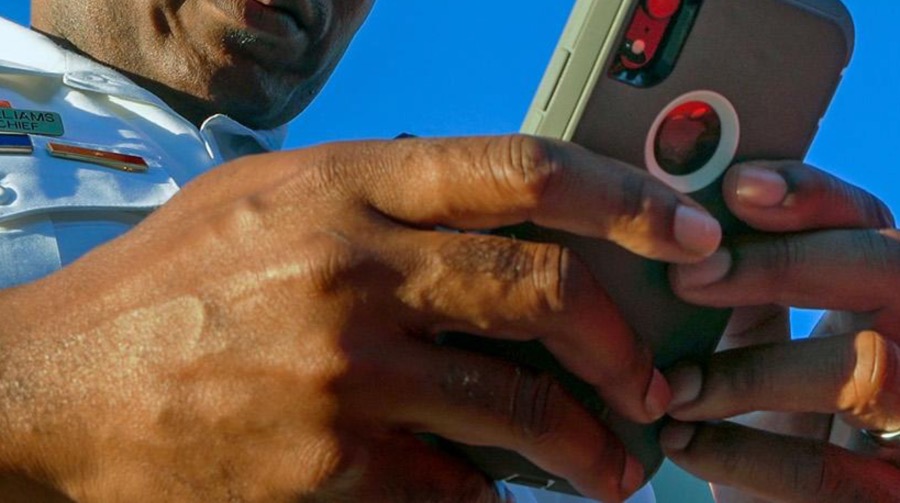
Consider the “art of the possible” when thinking about how FirstNet can enhance your existing communications. FirstNet can support situational awareness and emergency operations with data and video — the network can also augment voice communications using push-to-talk apps.
With push-to-talk, the press of a button instantly connects firefighters with dispatch and other first responders, making it an invaluable communications tool. With firefighters increasingly needing easy access to multimedia data on the job, push-to-talk over FirstNet can be a gamechanger. It offers cost savings and added capabilities compared to only using radios.
When I meet with members of the fire service from across the country, push-to-talk is a frequent topic of conversation. I hear from fire departments that have successfully implemented push-to-talk over FirstNet with huge cost savings compared to relying only on land mobile radios.
One fire chief from California told me his agency saved over $350,000 by using push-to-talk over FirstNet. Instead of issuing costly radios to everyone, his agency purchased inexpensive push-to-talk devices, connected to FirstNet, to allow responders to communicate during public events, gatherings, and other non-emergency functions. This saves money typically spent on land mobile radio systems, including purchasing devices, maintaining devices, and acquiring licenses.
A communications specialist from a statewide fire marshals organization told me his agency issued expensive radios to fire inspectors who rarely ever turned them on.
We discussed how switching to smartphones with push-to-talk would give inspectors similar capabilities as radios. Additionally, inspectors could take and upload photos, reference online databases, and file reports on scene — all from a single device.
Smartphones are better suited to the work of inspectors, and when adding push-to-talk over FirstNet, they provide the same functionality as radios.
I also talk with fire departments about integrating push-to-talk over FirstNet with land mobile radios.
Push-to-talk over FirstNet can extend the range of a land mobile radio system, as FirstNet can be accessed from almost anywhere while still communicating with your local radio network.
When an incident requires help from other agencies, push-to-talk over FirstNet allows you to communicate with mutual aid partners who may not share the same radio frequencies. It gives you the ability to connect with individuals or entire talk groups to share critical information, such as voice communications, pictures, and video.
I think about how useful this would have been when I was chief of a fire department in Massachusetts, and a major snowstorm blanketed the area. Even though I was in Texas for a conference, I could have used broadband to monitor my team’s incident response from 2,000 miles away. With push-to-talk over broadband, it would have been like sitting in the emergency operations center.
Push-to-talk over FirstNet can also be useful inside buildings where radio signals may not get through, but broadband works.
Pairing push-to-talk over FirstNet with land mobile radios creates two communications systems, which creates redundancy for your operations. Push-to-talk is another tool in your communications toolbox to rely on.
While most agencies I talk with now are using push-to-talk over broadband for community risk reduction efforts to prevent fires, some do use it to augment voice communications during emergency operations.
When push-to-talk over FirstNet is used in an emergency, it can reduce traffic on radio systems. Instead of using radios for every communication — often resulting in congested networks and busy signals — non-emergency traffic can be handled via push-to-talk on public safety broadband.
A rare tornado hit northern Michigan, wiping out homes and businesses and injuring residents of Otsego County. Incident commander Gavin Babieracki said, “When I was initially getting the EOC established, I was carrying seven different 800-megahertz radios. Then we discovered that our 800-megahertz system became overwhelmed.” They turned to FirstNet, setting up talk groups using FirstNet push-to-talk so responders from different agencies could easily connect with each other in groups and one-to-one.
FirstNet currently offers two mission critical push-to-talk apps with these benefits:
Built into the FirstNet network core to receive highest level of priority and preemption
1-to-1 and group texting and calling
Ability to speak to mutual aid agencies that may operate on other radio frequencies
Nationwide coverage extends communications beyond existing footprint of land mobile radio networks
Built on mission-critical standards established by the 3rd Generation Partnership Project (3GPP)
Support video-streaming and calling over Wi-Fi
To learn more about how FirstNet is helping public safety and the fire services community to leverage innovative public safety communications, sign up for the Fire Take with Gary McCarraher.